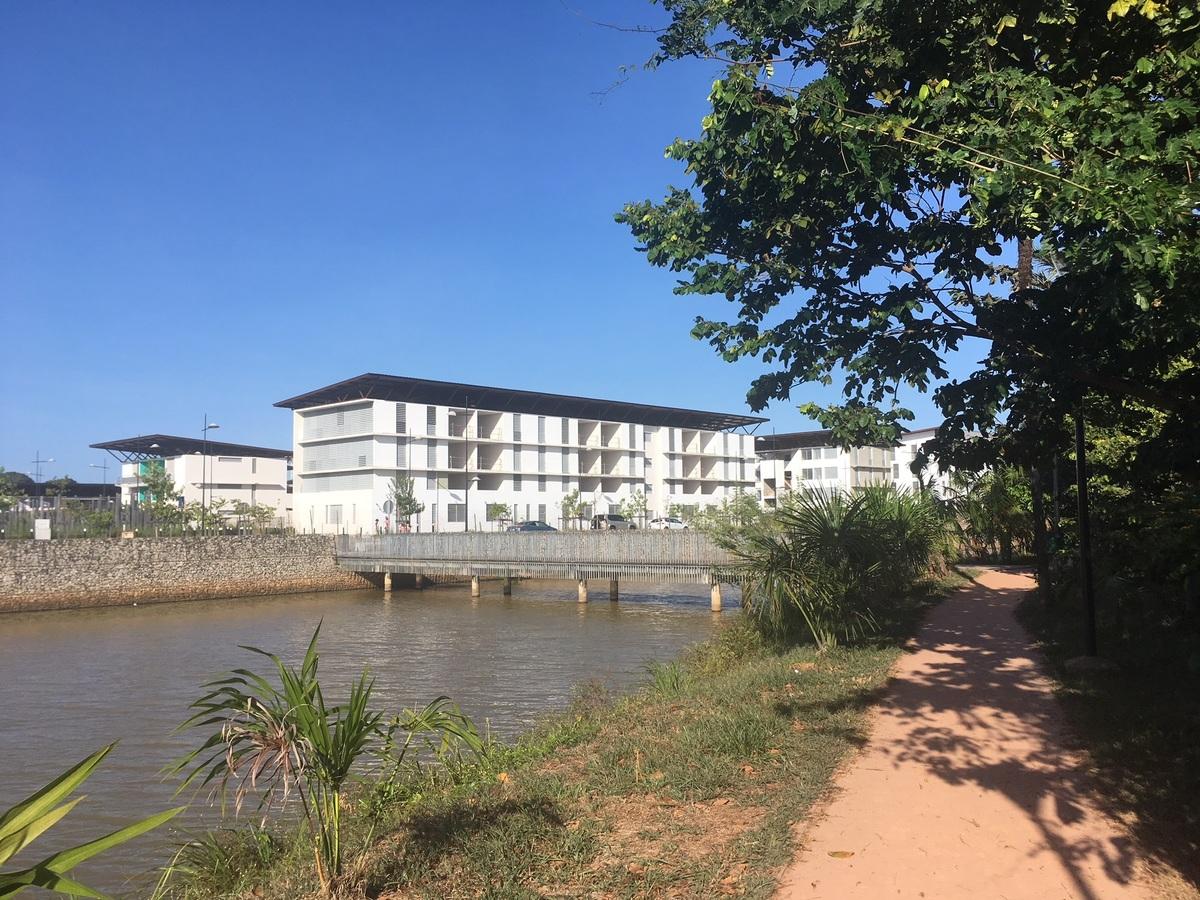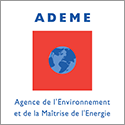#11 Urban planning and development in tropical climates: the example of French Guiana
Construction21 - La rédaction

As the example of French Guiana illustrates, sustainable construction in a warm climate is not only a technical challenge. It also requires taking into account a particular social context. Between eco-neighbourhood and local reality, enlightening with Denis Girou, General Manager of the Efpa Guyane.
What do you need to know before you talk about urban planning in French Guiana?
First of all, it is a territory as big as the Nouvelle Aquitaine region. Nevertheless, this comparison is misleading, as several important factors must be taken into account:
- the inhabited area, mainly located on the coastal zone and along the two rivers that delimit the northern and southern borders, represents no more than 1% of this area. However, it is sufficient to accommodate the entire population.
- the demographic dynamic is strong, since the population doubles every 20 years. This comes from a high birth rate, but also from continuous immigration or migratory waves.
- While the density is rather low, the occupancy rate of apartments is much higher than the average, with a ratio of about 3 people.
- the resources of households are also half the national average, with about 15,000 euros per tax household. It is therefore necessary to propose an offer adapted to this reality.
With the Amazon nearby, is the territory specific?
Yes, French Guiana is a land of contrasts, with very weak artificialized areas and very extensive virgin territories. This is both an asset and a constraint.
This is an asset, because we can integrate nature into urban planning projects to reduce heat islands. A constraint, because not encroaching too much on virgin territories is a real challenge. We do indeed have some subjects for the revitalization of towns, but the main part of the development is constituted by major expansion operations, with an average of 2500 dwellings each time. This is sometimes done on an emergency basis, such as after the earthquake in Haiti, which triggered a strong migration wave.
In addition, Guyana is often compared to the Antilles and we have similar regulations. However, the realities are very different. Flooding is the main natural threat in Guyana. We have no seismic and cyclonic risks. This should be considered more carefully for the overhang of roofs, since the wind is not a major factor.
Immigration, limited resources of the populations, the social factor must therefore be taken into account in French Guiana?
Yes, especially since Guyana's history is closely linked to the one of its close or more distant neighbours. It must be taken into account when planning an urban project. This may seem caricatural, but when you attack a neighbourhood populated mostly by people from Haiti or Suriname, they "import" their vision and habits of housing.
For this reason, it is particularly important because, if we speak of "competition" in urban development, it comes mainly from spontaneous, and therefore illegal, urbanization, in other words... The local population plans and builds the district itself. It is consequently important to take into account the lifestyle habits that are developing there and to offer land or housing at appropriate costs in order to successfully reintegrate into the law.
What is the share of spontaneous urbanization in French Guiana?
40% of the building recorded, which is enormous and generates dysfunctions at all levels. On an urban scale, nothing is planned in advance in terms of transport and infrastructure. The State has an obligation to create water sources, and the transport system must also be adapted quickly. As for the owners of the land, the law requires them to relocate the untitled occupants who are present on their land. This is feasible when it is a family, but not for a neighbourhood of 5000 people.
If this part of illegality is so important, it is also because spontaneous urbanization meets a need. Families do not have to register on a waiting list to obtain housing because construction is so fast. For example, over the past four years, we have been taking steps to start building 40 low-cost housing units on a site and at the same time more than 160 illegal buildings have been built in the area. In addition, the costs are much lower. It is estimated that they are on average 400€/m2 for the latter. It is 1900€/m2 for legally built districts.
Talking about sustainability in French Guiana is not only about ecological transition, it is also about meeting very specific needs, one of which is important: building housing, offering land and developing more quickly and at an affordable price.
How can this be done?
One of the challenges is the simplification of standards and their adaptation to the territory. Today, with the RTAA DOM, we are often confronted with the need to request exemptions. This is prejudicial from two points of view: not only does it slow down and weigh down the files, but it also opens the door to practices that are no longer regulated. The best thing would be to have a positive law, designed for us, that no longer requires us to stretch or force a standard. Whether in Guyana or Mayotte, pilot projects and proposals exist. We are waiting for the policy to take over the file.
To illustrate the nonsense of certain situations, we have sometimes carried out a public inquiry for the transformation of a territory... in which there were no inhabitants, therefore anyone to answer. We must also install electrical installations to current standards in places where electricity does not arrive.
One of the differences between illegal and legal construction is also the origin of the materials. Any material used in French Guiana must be approved in France. It is therefore often impossible to import lower-cost solutions from Brazil, for example. However, within the Caribbean Urban Forum, we have regular exchanges on technical solutions and the effects of climate change with neighboring countries.
However, the picture is not all black and white. In French Guiana, we had an excellent surprise when we started creating eco-neighborhoods. This is a standard that is not designed for tropical areas at all, but is well adapted to them.
How is an eco-neighbourhood designed in French Guiana?
In general, we rationalize as for a building, but on a macro scale. We are thinking about the layout of streets and installations to ensure that they take the best advantage of air circulation. In French Guiana, this flow is relatively stable with the presence of trade winds blowing from East to West. In addition, the temperature is around 28-30°C all year round, so it is another stable factor.
Then, we look at the nature of the soil to distribute hot and cold spots in order to further maximize this air circulation by creating atmospheric pressure differences. These different points can be lawns, car parks or water bodies.
Good management of the water is essential in French Guiana and rather than considering it a threat, we use it to optimize comfort, as in the écoquartier Hibiscus. The water bodies are at the center of the project and become islands of freshness, but also poles of sporting and social activities. This last point is important, because in a tropical area, it is often more pleasant to meet outside than in an enclosed space.
On the Rémire-Montjoly project, which is located near the coast, these cooling points are above all wooded areas that initially covered the area. They have been strategically conserved to provide a pleasant setting and manage the contribution of the trade winds.
These actions are possible because eco-neighborhoods are, by definition, rather extensive. Reasoning on 30 to 60 hectares gives you a lot of freedom and allows you to alternate between different construction and development solutions. The minimum objective on what we are designing today is to limit air conditioning to rooms.






